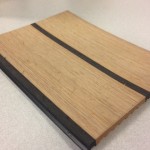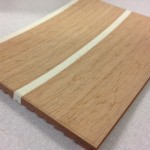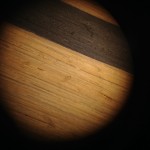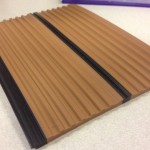I’ve often admired the look of teak decks. A pair of our Los Gatos Yacht Club members have a Nautor Swan 44 that has sexy grey teak running the length of the deck. Great footing and beautiful to look at but it can be some effort to maintain. Also the concerns about the expense and weight of teak, the countless holes that might be needed to produce a sprung teak deck, and the conservation issues; it makes you re-think!
Happily, a few European manufacturers have developed some synthetic teak products. Notably, the maker of FLEXITEEK offers in addition to their full service installations where they’ll come out to measure your boat and make templates, or have you send them in. Then they heat weld together the teak material into panels, which they’ll either install or send back to you for installation.
Practical Sailor did an evaluation of the materials from a cost and installation standpoint years ago. Most all of them are tongue and groove installation of material just a fraction of an inch thick that is glued along the tongue and shaped into patterns that conform to the deck. Once connected together like a puzzle, they can be glued down using mastic-ky glue to secure them to the desired locations.
Since that time the cost of anything petroleum based has gone up pretty significantly. I ordered some samples from the Florida-based ISITEEK distributor and show them here. At first glance, even holding the material in your hands, it’s hard to tell it’s not wood. Rather than just giving the surface impression of grain, there’s a fibrous texture that goes all the way through the material. This stuff is available with two colors of “grout” lines, either dark grey or off white. The color is a facsimile of lightly weathered teak material. The material warranty is 5 years.
My plan is to order up about 10 square feet of the material and give it some wear and tear on the Catalina before I go crazy with the installation. I am concerned how the material holds up, whether it fades, delaminates or gets algae encrusted.
- ISITEEK by Flexiteek in a classic dark colored groutline
- Off-white groutline
- Magnified 10x the simulated wood grain more than resembles wood
- The underside of the panel strip has some ridges for resilience and better adhesion




